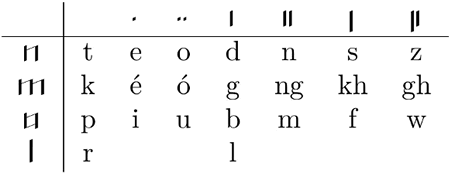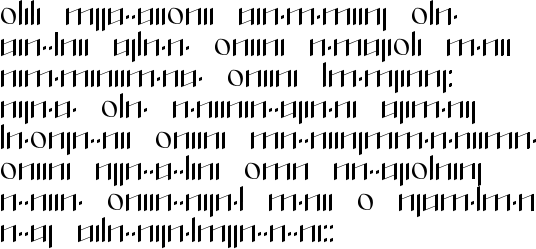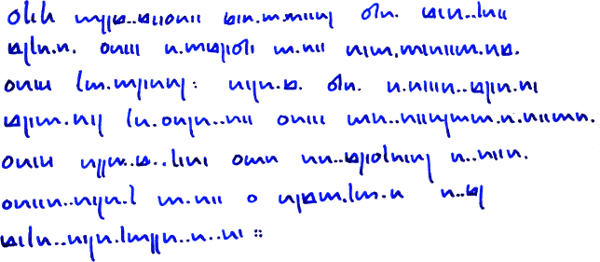Kalis was invented by Sascha Mücke and is a logical next step in the evolution of writing: While alphabets abstract from abugidas by splitting the glyphs representing syllables into single sounds (consonants and vowels), Kalis abstracts sounds into their features like place and manner of articulation, having glyphs for voiced, fricative etc. This leads to a featural type of alphabet with a very small number of glyphs whose pronunciation is highly influenced by their context.
The name Kalis is a word that uses all the gylphs of that alphabet exactly once.
Kalis has four basic consonant roots, three modifiers and one extra glyph for the vowel a:

The three modifiers affect the sound of the roots before them. Multiple modifiers can be applied to a root to signalize combined or amplified manners of articulation:

(e and o represent open-mid, é and ó close-mid vowels here)
Of course there are many more ways to combine roots and modifiers, e.g. a voiced-modifier after a vowel might lengthen the vowel or a double fricative-modifier might push the place of articulation further back towards the throat. The system is highly adaptable to different phonologies.
The following is a transcription of the first article of the Universal Declaration of Human Rights using an ad hoc orthographic mode for English.


All human beings are born free and equal in dignity and rights. They are
endowed with reason and conscience and should act towards one another in a
spirit of brotherhood.
(Article 1 of the Universal Declaration of Human Rights)
Constructed scripts for: Ainu | Arabic | Chinese languages | Dutch | English | Hawaiian | Hungarian | Japanese | Korean | Lingala | Malay & Indonesian | Persian | Tagalog / Filipino | Russian | Sanskrit | Spanish | Taino | Turkish | Vietnamese | Welsh | Other natural languages | Colour-based scripts | Tactile scripts | Phonetic/universal scripts | Constructed scripts for constructed languages | Adaptations of existing alphabets | Fictional alphabets | Magical alphabets | A-Z index | How to submit a constructed script
[top]
You can support this site by Buying Me A Coffee, and if you like what you see on this page, you can use the buttons below to share it with people you know.

If you like this site and find it useful, you can support it by making a donation via PayPal or Patreon, or by contributing in other ways. Omniglot is how I make my living.
Note: all links on this site to Amazon.com, Amazon.co.uk
and Amazon.fr
are affiliate links. This means I earn a commission if you click on any of them and buy something. So by clicking on these links you can help to support this site.
[top]